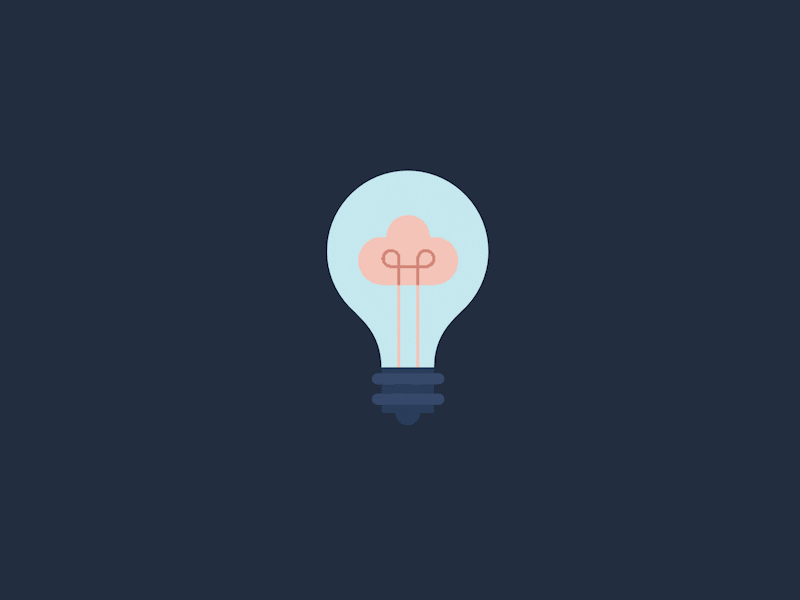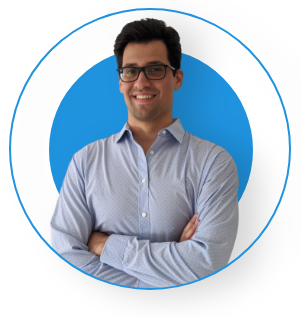
How working through my 200-hour learning plan helped me take charge of my professional growth.
Tell me if this sounds like you:
- You’re ambitious and goal-driven, but you don’t know how to channel your energy into actionable next steps.
- You’re a professional that’s eager to learn and grow, but you’re struggling to take hold of your development.
- You feel like there’s more you should be doing with your time, but you have difficulty balancing your goals with your personal needs.
At the end of my first professional year, I was the physical embodiment of all those paradoxes. I was grinding away diligently at work, believing that because I was regularly clocking all that extra effort that I was growing into a better marketer.
But I wasn’t.
I was looking to my work like it was the only catalyst for my growth, so I didn’t realize that I was letting the company’s goals and priorities define my growth opportunities – not my own. Sure, there was a fair bit of overlap between our priorities (hey there search marketing and conversion tracking), but there were a lot of personal interests I just didn’t have room to explore or nurture on the job alone (like UX design, data analysis or cross-channel strategizing).
I realized that to really take that next step in my development, I’d need a more focused approach: I needed a framework that would help me channel my energy into real, tangible progress.
So, why the 200-hour learning plan?
It started with an honest conversation with my then-Director in August 2019, where we talked about my long-term career goals, fields of interest, and areas to improve. Each of these interests and improvement areas became pillars of my learning plan, and the hours required were set to be an aggressive yet reasonably attainable target for the year ahead. From there, I created a tracking sheet to hold myself accountable to my targets and measure the progress I was making.
Once I had that framework set, I had all the tools I’d need to take charge of my development. So I did just that, completing my year-long learning plan at the end of August 2020.
Now, 200 hours is a lot more time than it sounds, with dozens of hours spread across online courses, readings, webinars, and LinkedIn Learning sessions. Over those hours, I picked up on four truisms that helped me add perspective to my progress:
These truisms all led to the single most empowering lesson I learned over the past year: how to drive sustainable career growth.
So if you find yourself in the same spot I was last August, join me as I dig a little deeper into what these truisms actually mean, and how they can help spur your own professional (and even personal) development.
Growth is incremental
We’ve all been there before – the frustration of not making progress fast enough. Or even worse, getting so frustrated you stop making progress at all.
Oftentimes that frustration exists because the goals or benchmarks you set for yourself were unrealistic in the first place. I know, I know, it’s cliche at this point – everybody and their mother knows what a SMART goal is. But there’s a reason it’s so cliche, because the fastest way to quit is to set goals you know you can’t attain.
Rome wasn’t built in a day and you won’t get where you’re going before you’re ready. To make measurable progress, you need to start small and be reasonable with what you’re looking to achieve. Once you’ve clearly defined where you’re trying to go, you can start racking up the small wins that will actually get you there.
Remember, your small wins accumulate over time. You may not see it day to day or week to week, but keep at it long enough and you’ll find that all those little gains have translated to tangible growth. In my own learning plan it took me roughly 40 hours before I started connecting any dots at all, and yet another 40-something hours after then (when I finished Strategyzer’s excellent Value Proposition Design book) before a light really went off and I started IDing common themes across disciplines that I would have missed just 4 months prior.

The point is that any one of those first 80ish hours (heck, even of the whole 200 hours) don’t matter on their own. The light only went off because I worked consistently to flip that switch, hour after hour after hour. That’s because progress doesn’t happen in a vacuum, it works by building on the knowledge and frameworks you already have.
In other words, growth is incremental – it doesn’t happen all at once.
It doesn’t have to be all or nothing
Raise your hand if you’ve ever avoided finishing something important because you were daunted by a heavy workload or creeping deadline.

This phenomenon is known as procrastination, and it’s a doozy. It often devolves into a negative feedback loop where stress leads to dejection, which leads to further procrastination, which leads to further stress, and now we’re spiralling. The problem is if you keep holding off important work because you’re waiting for the perfect time to act, you’ll turn it into a roadblock that becomes too big to conquer – that’s what it means to “make mountains out of molehills”.
So how can you summit that mountain? By chipping away and making it a little smaller each day. If you keep taking pebble after pebble then eventually that mountain isn’t quite so big.
Breaking down your mountains into easily conquerable “pebbles” helps make those big tasks much less daunting, and lets you chart your path upwards. From there, it’s about ditching that all or nothing mindset and learning to get your work in when you can.
It’s easy to justify blowing off a single 2-hour productivity session – after all, that’s a lot of time to sit in one spot and keep focused. So if you know you need to put the work in, why not make it easier on your attention span by breaking down your session into 15- or 30-minute sprints instead? This gives you more energy, more focus, and won’t feel as overwhelming as one big block of working time.
I put this truism into practice when COVID forced me to change my approach to fitness. I couldn’t hit the gym 3-4 times a week for heavy HIIT workouts anymore, but I could still go for hour-long walks or hit a quick yoga session or do bodyweight circuits at home instead. Trading heavy workouts for low-intensity ones lowered the activity threshold to something I could do consistently every day without gym equipment – and it helped me shed over 60 pounds since March.
Don’t make mountains out of molehills, and ditch the all or nothing mindset.
Hold yourself accountable, but cut yourself some slack
Around late April 2020, my motivation plummeted. And I know I wasn’t alone – many people’s motivation fell after the first month of COVID lockdowns left us with more uncertainty than ever knowing “normal” was a long way off.
The thing is, my motivation was falling since January 2020 anyways. While the first two truisms helped propel me through the first half of my learning plan, my trajectory was far from sustainable. I was gaining the tools I needed to keep growing, yet my drive started slipping.
Why? Because I didn’t cut myself enough slack – and I started burning out as a result.

Burnout is so destructive because it reflects the law of diminishing returns. When your mind and workload are overburdened your concentration and efficiency plummet, and you end up wasting a lot of energy on meaningless tasks. You get less value for the work you’ve done, and feel cheated because of it.
You can’t get over burnout if you don’t know what’s behind it. Though there are many different causes (big HBR fan here), in my case it was the unreasonable internal pressure I put on myself to keep growing, which meant I’d always feel guilty whenever I wasn’t grinding away every waking hour. Once I realized I was the root of my stress, getting past it was as simple as letting go of my own unrealistic expectations.
But beating burnout isn’t the only reason you should give yourself a break. In fact, one of the most surprising things I learned in my 200 hours was just how much better I became at problem-solving and critical thinking once I finally gave my unconscious mind a second to breathe.
And no wonder! Turns out our unconscious minds are so much better at processing complex decisions and information than our conscious minds. Unconscious thought works by analyzing information over time to reach an objective conclusion – so ironically, the best way to harness that brain power is by shutting it off. By easing up on the throttle when your mind is oversaturated, you can outsource the labour of thinking to your unconscious and let your intuition lead you to an answer.
So hold yourself accountable, but cut yourself some slack – that’s how “Eureka!” moments happen.
Learning needs action
As I turned the corner in early July 2020 my motivation rebounded. There were only 30ish hours left in my 200-hour learning plan! The finish line was in sight and a wave of excitement and accomplishment washed over me. I could finally point to real, tangible proof of the progress I made towards becoming a better marketer. And that was immensely rewarding.
But soon after, my sense of achievement turned to apprehension as a new question started bugging me – Now what?
When I first created my learning plan, there were no next steps planned once I’d finished it. The 200 hours were a framework for me to channel my energy into to spur growth – and mission accomplished. Yet once they were over, I knew I’d need to replace them with a new framework if I wanted to keep the momentum going.
Problem was, replacing the old framework with another few hundred hours of studying just felt so…. uninspired. It wouldn’t be enough to just continue “learning” indefinitely. To keep building on my growth and take the next step in my career development, I’d need to start putting my learning into action.
“Until you try, you don’t know what you can’t do”
Henry James, Author, OM
Remember, progress doesn’t happen in a vacuum. If you’re always in learn-now mode without tying it to action then you aren’t actually challenging yourself to improve. Action helps you contextualize your learning, and map how far you’ve come because of it. It lets you test new assumptions, understand how your critical thinking has evolved, and identify areas for future growth. And you can’t truly understand how well you know something until you put it into practice.
Learning needs action to make it stick.
So… now what?
I’ve made some huge professional strides since that August 2019 chat with my Director where the 200-hour learning plan was first conceived. It was a long road, but I picked up on some truisms along the way. Discovering these truisms taught me patience, balance, and – most importantly – how to drive sustainable career growth.
My learning plan is what brought me here today, and in one form or another I’ll always be creating one for myself – they’re too valuable a tool not to. But this year (August 2020-21), that plan will only cover 100 hours across marketing strategy, consumer behaviour, and business excellence.
So if it’s so valuable, why did I slash my current learning plan’s hours by half? Because – like we talked about in the final truism – at a certain point you have to put it into practice. And this website is how I’m turning my learning into action.
When I started my learning plan in August 2019, it was with the goal of taking charge of my own professional development. And I did. But the lesson I stumbled across – driving sustainable career growth – is what helped me discover my purpose and ultimately inspired me to build this site. Now I’ve got the opportunity to bring my purpose to life while simultaneously turning what I learn into actionable tips and resources for Toronto’s digital marketing community. I’ve got the opportunity to create a positive growth feedback loop, and all it really cost me was 200 hours of studying.
Now that’s what I call a strong return on investment.
I hope my ramblings can help you too take charge of your professional development. And if you’re looking for some tips or encouragement on how to start starting, I’m always happy to chat.
